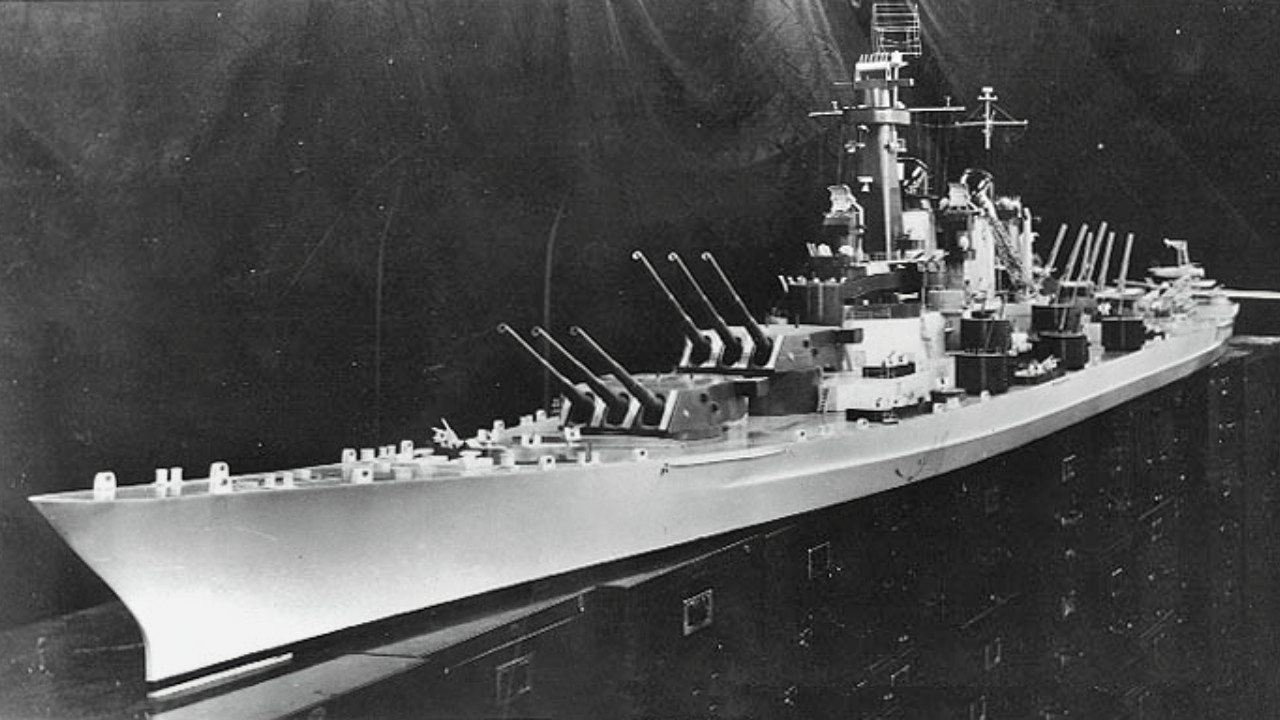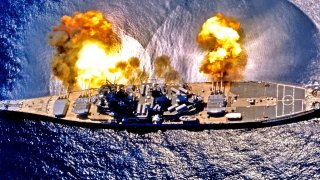Montana-Class: The U.S. Navy Wanted This Massive 71,000 Ton Battleship
The Montana-Class would have been the biggest battleship ever for the U.S. Navy. And yet, such a massive vessel would have been totally obsolete.
The U.S. Navy Almost Build a Larger Battleship – The Montana-class Would Have Been Useless in the Cold War - Battleships once ruled the waves. That was then, this is now and the reality is no navy in the world now operates the slow, lumbering battleships of a bygone era. However, just prior to the Second World War, multiple powers looked to see how large of a warship could be produced.
In the case of the United States, it was the class of warships that was never built, the Montana-class – authorized under the "Two Ocean Navy" building program and funded in Fiscal Year 1941. These were to be the last battle wagons ever ordered by the U.S. Navy.
The ships were nearly a third larger than the preceding Iowa-class, and at 920 feet in length, with a beam of 121 feet, and a displacement of 60,500 tons – 71,000 tons with war load – would have been even larger than the HMS Vanguard , the last battleship to be built and see service.
A total of five of the massive warships were ordered, with the lead in her class (BB-67) to be built at the Philadelphia Navy Yard along with the Ohio (BB-68); while Maine (BB-69) and New Hampshire (BB-70) were to be constructed at the New York Navy Yard in Brooklyn; with the Louisiana (BB-71) built at the Norfolk Navy Yard in Portsmouth, Virginia.
As Brent Eastwood previously reported for The National Interest:
"With twelve instead of nine 16-inch main guns (the plans for the 18-inch guns were dropped) and twenty 5-inch guns, the proposed Montana, Ohio, Maine, New Hampshire, and Louisiana would have boasted 25-percent more fire power than the already lethal main battery of the Iowa-class. Those 16-inch guns could fire with an astonishing range of up to 23-miles and the projectiles weighed up to 2,700 pounds. Each gun took dozens of sailors to fire."
Even as proposed, such massive battleships were not without problems.
The vessels would have required a crew of at least 2,355 personnel – and perhaps as many as 2,780 if fielded as a flagship of the fleet.
Moreover, their massive size, increased armor, and added firepower came at some notable costs.

The Montana-class was slower – not fast enough to escort carriers, but still fast enough to operate in the battle line. Given the threat of enemy aircraft, their slower speed would have been an issue. This fact was brought home in how Royal Navy's HMS Prince of Wales was sunk off the coast of Singapore in December 1941 by torpedo aircraft, less than a year after she was commissioned.
Then there is the argument that this class was designed to be a "Yamato killer," capable of taking on the Imperial Japanese Navy's powerful battleship. Aircraft, not big gun battleships were what proved to be the Achilles Heel to the Yamato.
Montana-Class: What If They Were Built?
A common question asked on various social media platforms about the Montana-class is what purpose it could have served in the Cold War and beyond. There are certainly those who envisioned how these behemoths could have been transformed into giant missile carriers, modified to carry short/vertical takeoff and landing (SVTOL) aircraft, becoming a massive floating fortress – possibly remaining in service for decades to come.
Our actual history suggests otherwise.

Though the four Iowa- class battlewagons were returned to service – including as late as the 1980s – by that point, they were truly relics of the past. There is little reason to suggest the Montana-class would have any different of a career had they been built.
Moreover, to even suggest they could be in service today is unimaginable. The era of the battleship is long over, and for good reason. Smaller and faster warships can take on many of the same roles – and require far fewer sailors.

At best, any surviving Montana-class battleships would be truly impressive museum ships docked around the United States. Perhaps one would be in Portland, Maine, while another would be on the waterfront of New Orleans. And we'd probably be debating whether World War II needed to last until 1947 and how it might have been better if greater attention was placed on the Essex-class aircraft carriers.
Author Experience and Expertise: Peter Suciu
Peter Suciu is a Michigan-based writer. He has contributed to more than four dozen magazines, newspapers, and websites with over 3,200 published pieces over a twenty-year career in journalism. He regularly writes about military hardware, firearms history, cybersecurity, politics, and international affairs. Peter is also a Contributing Writer for Forbes and Clearance Jobs. You can follow him on Twitter: @PeterSuciu. You can email the author: [email protected].


